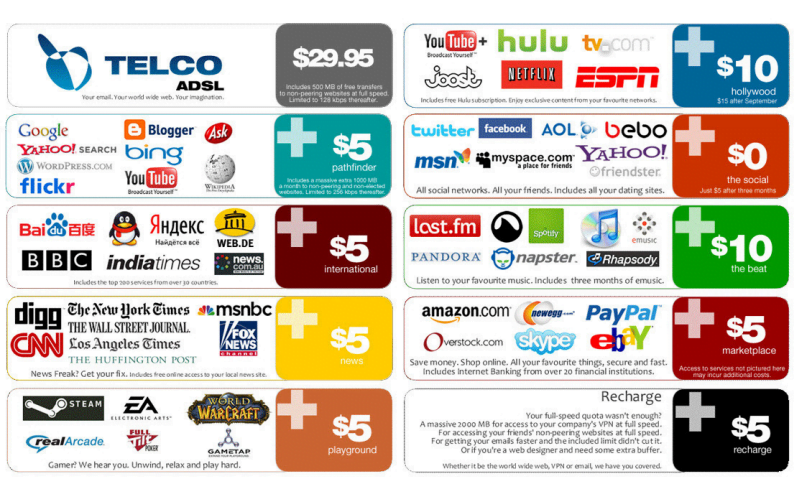Ask any content marketer what their greatest fear is, and they’ll probably say something stupid and obvious like heights or spiders or clowns (or some kind of unholy, nightmarish spider-clown slowly descending the Burj Khalifa).
What we should be scared of is running out of stuff to write about.

Jokes aside, coming up with ideas for new content topics can be an absolute bastard. Many content marketers rightfully dread the content ideation process, especially those of us who write for well-established blogs with frequent publication schedules in competitive verticals. Running out of ideas is Not An Option, so what do we do?
In this post, I’m going to show you.
We’ll be examining five ways to find things to write about, whether you’re writing for a major B2B blog or your personal Medium page. We’ll look at the pros and cons of each approach including common pitfalls to avoid, before diving into some general tips to help you develop new content ideas quickly and (relatively) painlessly.
1. Find Things to Write About Using Competitive Intelligence Tools
Since we’re always telling you to rely on hard data rather than assumptions, we’re going to look at coming up with content ideas using competitive intelligence tools first.

Competitive intelligence tools can be invaluable during the content iteration process because they can help us quantify why some content ideas are better than others – specifically, which topics are being shared and discussed most.
I don’t want to get bogged down in a platform-specific tutorial, but for the sake of example, we’re going to use BuzzSumo, but I’ll keep the concepts as platform-agnostic as I can.
First, we need to specify what keyword or vertical we’re interested in. We do this by entering our query into the relevant field. In this case, I’m going to take a look at content about… content. (How meta.)

As you can see, the results above show us a range of useful information, but we’re most interested in the number of social shares. Why? Because the more shares an article has, the more confident we can be that another article on the same topic will also be shared widely.
Social shares are a pretty reliable indication that the article in question is pushing the right buttons. It’s important to note that social shares don’t necessarily mean the article will be positive, or even well-written; all we need to know is that many readers, regardless of the article’s angle or perspective, felt compelled to share it with their networks.
An article being shared widely across social platforms can be an indication of several different things:
- It’s a breaking news story that got the scoop first and is being shared/cited widely
- The article is particularly useful, insightful, or actionable
- The writer has a unique perspective or insight into the topic
- The opinions in the article defy conventional wisdom about the topic
- It’s an article so bad or an opinion so controversial that people are sharing it out of anger or incredulity
With the exception of the last one, any of the preceding points are worthy of emulating in our own content.

And this is just one news outlet. Image via Reuters.
Obviously, news content is uniquely fresh and “new” precisely because it focuses on emerging or developing events, but this doesn’t help you if your publication doesn’t publish news content. As a rule, we should always be striving to produce actionable, insightful content, so the second point is kind of a no-brainer. It also goes without saying that we shouldn’t be trying to publish content that people only share because they can’t believe how bad it is, so what does that leave us with? Publishing content with unique insights into a topic, and that offers an unusual, fresh perspective on a well-worn subject.
We’ve discussed the value of contrarian content before, but it’s worth reiterating that adopting an alternate viewpoint can be an excellent way to distinguish your content from the rest of the crowd. It’s also an easy way to come up with unique blog ideas; simply find the prevailing points of view about a current topic in your industry, then come up with an angle that takes the opposite stance to everyone else.

Remember – it’s not enough to know your topic inside and out, or be able to write well. You have to be able to identify broader trends and think creatively about how to provide value to your audience by exploring alternate angles.
A Note About Comments
Some content analytics platforms allow you to filter results based on the number of comments an article has. An article with dozens of comments could suggest that the article inspired vigorous debate, but it could also mean that the site that published the article just has a terrible spam filter.

Image via Pew Research Center
Another potential pitfall of relying on the number of comments an article has as an indication of its potential worth as a content idea is that while many content analytics platforms do a fine job of correctly tallying the number of comments an article has, this tends to be more difficult to calculate accurately. There are dozens of comment systems in use across many of the most popular sites on the web, from Disqus and Kinja to Postmatic and Jetpack, and not every analytics platform can accurately capture true comment data from every commenting systems.
Basically, try to think of comment volume as an interesting secondary metric to consider rather than a reliable indication of an article’s potential as a source for a new post.
2. Find Things to Write About Using Keyword Research Tools
While we’re on the topic of tools, our next tip focuses on using keyword research tools as a way to develop new content ideas.
Regardless of which keyword tool you choose to use, what we’re looking for are relevant keywords that we may not have thought of otherwise. This can be especially helpful if, like us here at WordStream, you work to a frequent publication schedule for a popular, established blog.
There are dozens of free keyword tools out there, but we like to think ours is pretty good, so I’ll be using WordStream’s Free Keyword Tool to illustrate this process.
First, we need to choose a nice, broad initial keyword to start our search, which is sometimes referred to as a seed keyword. For this example, I went with the keyword “cryptocurrency” with no industry vertical specified and results limited to the United States:

This search yielded some interesting results. Here are some of the more interesting keyword suggestions for my initial seed query “cryptocurrency” and their accompanying monthly search volumes on Google:
- Litecoin vs bitcoin – 12,100
- Cryptocurrency market capitalization – 8,100
- Best cryptocurrency to invest in – 5,400
- Is bitcoin farming profitable – 5,400
- List of cryptocurrencies by market cap – 1,900
- How to make a cryptocurrency – 1,900
- Cryptocurrency mining explained – 720
- Best digital currency exchanges – 390
- Digital currency vs cryptocurrency – 40
- List of cryptocurrencies by value – 20
Although the average monthly search volume for some of these keywords is vanishingly small – just 20 searches per month for the keyword “list of cryptocurrencies by value” for example – we’re primarily looking for content ideas. Many of these keywords would be perfect for introductory guides, in-depth explainers, or even shorter listicles, and could easily be used as seed keywords themselves for further keyword research.
3. Find Things to Write About in the News
Despite the fact that most news these days is as toxic as a neglected Superfund site, the news can be an excellent source of content ideas.

Hey, it’s not ALL bad news!
Recently, we’ve been producing a lot more news-based content. This wasn’t necessarily by design, but rather necessity; recent announcements like Google’s recently unveiled ad blocker for Chrome and the launch of AMP Stories are simply too important to overlook, and we’d be doing our readers a disservice by not writing about them. That said, we’re don’t tend to prioritize news stories as a rule – our readers don’t necessarily look to us for breaking stories – but by publishing more news content, we’ve been able to provide more of the kind of in-depth analysis that our readers do expect from us.
However, you didn’t come here to listen to me recommend newsjacking, so how else can you use the news as a wellspring of content ideas? By asking questions nobody else is asking.

In 2014, we published this blog post on net neutrality (RIP). I pitched Elisa this post because at the time, nobody seemed to be asking how the repeal of net neutrality regulations would affect small businesses and digital marketers. Since the post was originally published, we’ve updated it several times to reflect the ongoing dismantling of the internet as we know it, which has resulted in a steady stream of traffic to this and other posts.
We took a similar approach to this post about some of the most innovative chatbots on the web. Obviously this isn’t a timely or news-based post, but it does include citations and links to content that were originally news articles. We then used this to provide further analysis about what developments in conversational agents will mean for digital marketers.
Still not satisfied? Let’s look at another example of this process from start to finish.
Below is a screenshot of headlines from the Content Marketing section of my Feedly homepage:

As you can see, the top three stories in my feed are from well-known sources – the Content Marketing Institute, Copyblogger, and Blog Tyrant.
Now let’s say I’m actively looking for a blog post to write, and this is the news content I’ve got to work with. Off the top of my head, here’s what comes to my mind for potential blog topic ideas:
- Do clickbait headlines like the one in that CMI post even work anymore? Are major publishers like CMI as fatigued by intense editorial calendars as smaller publishers?
- I have no idea what to expect from that Copyblogger story, nor what it’s even about. Maybe a post about how summaries of stories can make your audience feel? Or a guide on how to nail a summary of your article? Or a post exploring the risks of badly-written summaries?
- All three of the top stories’ descriptions have been truncated by Feedly. What about a post on the current recommended specifications of meta descriptions? Or a list of reasons why meta descriptions aren’t as important as they used to be?
The ideas above might not be that great, and they’re definitely not ready to be pitched to an editor, but that list literally took less than five minutes to put together and it gives me a solid starting point to work with. If I were struggling to come up with an idea for my next post, the rough ideas above could all work as launch points for brainstorming a viable idea that can be developed into a more complete outline or pitch.
Remember – we’re not looking to simply newsjack our way to more traffic (but hey, if you manage, more power to you), we’re looking for opportunities to provide more depth and context to emerging stories and developments in our industry.
Once you start reading the news with content in mind, you’ll be amazed by the ideas that will come to you.
4. Find Things to Write About Using Blog Topic Generators
Before you close this tab out of disgust that I’m about to seriously recommend blog topic generators as valid content ideation tools, hear me out.
The thing about blog topic generators is that they aren’t meant to be perfect – they’re only supposed to get the rusty gears in your noggin turning, like a can of WD-40. Think of blog topic generators like writing prompts in a creative writing class. Some prompts are very good, and others are so bad they’re practically crimes against literature.
The same goes for blog topic generators.
Let’s take a look at what using a blog topic generator looks like. Below is a screenshot of HubSpot’s Blog Topic Generator, one of the better topic generators out there. For this example, I entered three terms into the generator: Writing, Advertising, and Marketing:

After clicking “Give Me Blog Ideas!” we’re presented with the following results:

At first glance, these results are surprisingly good. To be honest, I think I could make any of these example post ideas work as real blog posts, but let’s say we want to use these ideas as the basis for some ideas of our own.
As we did with the news article examples, below is a list of content ideas I came up with in just a few minutes based on the ideas provided by HubSpot’s Blog Topic Generator. Again, these ideas aren’t going to break the internet with their boldness of vision, but they’re definitely good enough to bring to your next editorial meeting:
- The Cognitive Benefits of Teaching Children Cursive: A Fast Company-style article exploring the developmental benefits of teaching children cursive handwriting skills, explaining the physiological and cognitive processes that happen when kids learn to write in cursive
- 5 Reasons Why the Best Blog Post You’ve Ever Written Still Sucks: A how-to article examining what separates merely good content from really great content, featuring practical tips on how to be even more discerning about gauging the quality of your writing
- 7 Ways to Make Yourself Professionally Indispensable: An in-depth, listicle-style post featuring seven actionable ways to make yourself indispensable to your manager, including learning resources where readers can go to acquire these skills and third-party data about professional skills currently in high demand
- Why Everything You Know About Headlines Is Wrong: A blog post offering counterpoints to many of the established best practices about writing headlines, including examples of various types of headlines i.e. news headlines, ad headlines, landing page headlines etc.
- 3 Quick Hacks to Make Your Content More Shareable: Short-form blog post featuring three highly actionable steps content marketers can take to make their content more appealing from a social shares perspective, including examples
As I said, none of the ideas above are particularly earth-shattering in their originality, but the list above only took me five minutes or so to put together. With more time, or more specific initial criteria, we could easily come up with better ideas, or more ideas, or even use the rough notes above as the basis for further research and development.
5. Find Things to Write About…In Your Old Content
Our final tip for finding new things to write about is to look back through your old content.
Reviewing older content can be a lot of fun (or an exercise in cringe-inducing hilarity) and it’s a great way to see your progress as a writer over time – but that’s not all. Going back through older content is also an excellent way to come up with new things to write about.
For example, I did a quick search for some older blog posts I’d written with a view to coming up with some new content ideas. Here are the first handful of posts that caught my eye:
- 13 Ways to Combat Shopping Cart Abandonment
- 6 Examples of Subliminal Advertising, from Spooky to NSFW
- How to Write a Cover Letter for a Job Application
- Native Advertising Examples: 5 of the Best (& Worst)
Unlike our net neutrality example from earlier, none of these posts are candidates for updates – there are no timely or news-based elements to them. However, that doesn’t mean we can’t wring even more ideas out of them.

Let’s take the first example, a blog post about shopping cart abandonment that we published in March of 2016. Before I even sat down to re-read that post, a thought popped into my head. We’re always hearing about how mobile traffic is exceeding desktop traffic across many ecommerce platforms, and that offline conversion tracking technology is advancing rapidly to meet the expectations of today’s advertisers.
So what are the biggest potential obstacles to ecommerce conversions that are exclusive to mobile traffic?
Already, this idea feels like it has legs. Let’s break it down:
- The topic expands and builds upon the foundation established in the original post
- The entire angle of the post – major barriers to mobile ecommerce conversions – is based on broader trends in ecommerce
- The post has a speculative, forward-thinking element that allows for the inclusion of timelier elements such as new data and opinion/analysis of emerging technological developments
- Both ecommerce and mobile growth are well-established topics that resonate strongly with our core audience
See how easy this is? I haven’t even put pen to proverbial paper yet, and already I’ve got a solid idea that aligns with our editorial and business objectives – not bad for idly looking through older posts.
We’re not done yet, though. Here’s some more rough ideas I came up with based on the other posts in my initial list of older content:
- Does Offline Conversion Tracking Go Too Far?: A post exploring emerging technologies in offline conversion tracking that asks whether these tracking techniques violate the privacy of end users
- What to Expect From a Job Interview for a Remote Gig: An instructional post with real-life tips and tricks for what to expect from an interview for a 100% virtual/remote job, complete with advice on answering tough and unexpected questions
- The State of Native 2018: An in-depth, long-form blog post that examines the current landscape of native advertising and advertorial content, featuring new examples, statistical data, and third-party reports/studies
Again, these ideas are hardly amazing, but they’re a start – and we had to do almost nothing to come up with them save look through some older posts. Plus, these are just rough content ideas based on my own posts; if I went through some of our older posts written by other writers, I’d have even more ideas. (Plus it’s always nice to see two- or three-year-old posts holding up today.)
Seek and Ye Shall Find
Coming up with new ideas for things to write about can be hard; smash-your-head-into-your-desk-repeatedly-until-gradually-losing-consciousness hard. It gets even harder when you write for a particularly demanding client or an established blog in a highly competitive industry. However, as we’ve seen throughout this post, it’s definitely possible to come up with new content ideas, even if you’re staring down a fierce deadline or feel completely bereft of ideas.
What other tips would you share for content producers suffering from writers’ block?







